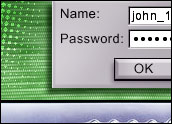
Efforts to harmonize international copyright laws have been in progress since the late 19th century, but the rise of the digital medium has thrust the movement back into the limelight recently. More than any other medium, the Internet has taken the copyright and intellectual property environment and turned it on its head. Since the Web’s emergence in 1995, companies, governments and content creators have slowly adjusted, through lessons learned, innovation and legislation.
An understanding of copyright law may be the last thing business professionals have on their minds, yet it is crucial that purveyors of content and media know the basics, at the very least. To help provide a starting point from which one can explore the complex arena of copyright law, TechNewsWorld spoke to Rob Kasunic, principal legal advisor to the United States Copyright Office.
TechNewsWorld: How does the U.S. Copyright office educate the public on copyright and the online world?
Rob Kasunic: The Copyright Office spends a great deal of time on public information and education. In many ways, the centerpiece of our public outreach is the Copyright Office’s Web site. The office posts all its new developments on the site, such as testimony by the register before Congress, new proposed legislation affecting copyright and regulatory information. Even some of the rule makings that the Office conducts are largely administered through electronic submission of comments over the Internet.
The Copyright Office Web site also contains vast amounts of information relating to copyright, including digital copyright issues, in its circulars, brochures, FAQs, fact sheets and reports. In addition, all copyright registrations and records since 1978 may be searched online through our site.
The Public Information Office (PIO) of the Copyright Office is another key component of the dissemination of information. Last year, the PIO answered over 118, 000 telephone inquiries, 42,000 e-mail inquiries and 13,000 letters. In addition to these direct inquiries, the register and her senior staff spoke at more than 40 symposia, conferences and workshops on various aspects of copyright law. A significant portion of these speeches addressed copyright issues posed by digital content, the Internet and current technology. To increase our ability to reach more areas of the country, we have also begun to use video conferencing to interact with university and library groups around the country.
TNW: Are there government statistics on piracy, from a content or literature and audio/video perspective?
Kasunic: The primary role of the Copyright Office is to administer and sustain aneffective national copyright system, including registration of copyrights, deposit of copies of works published in the U.S. and recording of documents concerning copyrighted works. The Copyright Office does not have statutory authority to police or enforce copyright infringement and does not independently assess statistics relating to infringement.
The Copyright Office also assists the United States Trade Representative in its annual “Special 301” review of copyright piracy and market-access problems around the world. This process assesses the piracy levels of U.S. works in foreign countries and, in the most serious situations, may result in trade sanctions being imposed. Further information on international piracy from the USTR is available online.
TNW: Does enforcement reassure those who create works and therefore promote creativity? Do artists and writers, knowing their works are protected, produce more frequently?
Kasunic: The entire purpose of copyright protection in the United States is to provide exclusive rights to authors in order to encourage them to create new works. The encouragement of creativity benefits the public through the dissemination of a rich array of copyrighted works. Anything that undermines the incentive for authors, artists and creators to create and widely disseminate works to the public adversely affects creators and ultimately the public.
While there are some criminal and international trade sanctions for copyright infringement that can be brought by the U.S. government in appropriate circumstances, most enforcement of copyright infringement is the responsibility of copyright owners themselves. Enforcement of copyright owners’ rights is, at times, necessary to maintain the economic incentive to create, yet enforcement is often a long and expensive process.
Without question, civil or criminal enforcement of copyright infringement serves to reassure creators to some extent, but in the digital environment, where massive infringement is so easy to accomplish with the click of a mouse, enforcement alone is seldom enough to reassure creators. Adequate legal and technological protection for copyrighted works is an important component to reassure creators in the digital environment.
TNW: What is the rule of thumb for using content from other copyright owners when republishing online? Does the Copyright office have basic recommendations?
Kasunic: Unless there is a particular exemption in the Copyright Act for theparticular use intended, get permission.
While there are many discussions these days about the allegedly diminishing nature of fair use in the digital environment, many use the term “fair use” very loosely. Fair use is a case-by-case determination of whether a particular use is reasonable under the circumstances, such that a reasonable copyright owner would not require permission for the use.
In making a fair use determination for each particular use of a copyrighted work, there are four factors that must be considered (see section 107 in the Copyright Act).
One of the most important factors to consider is the effect of the use on the potential market for the copyrighted work. In the digital environment, the potential effect of posting a work on the Internet can be to completely destroy the market for the work. Therefore, aside from certain very limited uses, such as a short quotation, a criticism, comment or parody of a work, of some other very limited, reasonable use, obtaining permission is the only safe course of action.
The Internet actually makes obtaining permission easier in certain circumstances — through, for example, the Copyright Clearance Center, ASCAP, BMI, SESAC or the Harry Fox Agency. It should also be understood that even if a person believes his or her intended use is a fair use, if the copyright owner disagrees with the assessment, copyright infringement litigation is one way the dispute might be resolved. It generally makes sense to obtainpermission before using or republishing someone else’s work online.
TNW: Copyright laws are being harmonized to a certain extent in Europe based on EU directives. Will there be an effort in the future to align copyright laws more broadly on an international level for easier enforcement and to encourage the presentation of work across borders by content producers?
Kasunic: Efforts to harmonize copyright laws internationally have been going onfor decades, starting with the Berne Convention in 1886, and culminating with three important international agreements in the 1990s — The World Trade Organization’s TRIPS Agreement in 1994, the World Intellectual Property Organization’s Copyright Treaty in 1996 and the WIPO Performances and Phonograms Treaty and the WIPO “Internet” Treaties in 1996.
The EU directives are a good example of regional harmonization of copyright, as are recent U.S. Free Trade Agreements that contain copyright provisions. The WIPO treaties are designed to address the Internet and new digital technologies, and are based on the recognition that, in the new environment, harmonization is more important given the ease with which copies can be disseminated across borders and throughout the world.
Copyright remains, however, territorial protection whereby each country’s laws apply to conduct within its borders, which preserves notions of national sovereignty and some flexibility for countries to address local conditions in their national laws, consistent with minimum international standards. Marketplace solutions, such as reciprocal collective licensing, can also “harmonize” different copyright systems and help copyright ownersenforce and exploit their copyrights globally.
TNW: Can you identify courses of action professionals could take if theybelieve works have been used in violation of their copyright?
Kasunic: Regarding online protection and enforcement, as an initial matter, sincecopying and distribution is so much easier online, creators should take reasonable precautions before infringement occurs. In the U.S., registration of copyright provides some important advantages if accomplished before an infringement (or within three months of publication). Registration offers the copyright owner the availability of statutory damages and the potential for recovery of attorneys’ fees and costs. Both statutory damages and potential recovery of attorneys’ fees can be important advantages when considering private enforcement of rights.
Creators may also want to consider the use of technological protection measures or the inclusion of copyright management information in works distributed online. Many off-the-shelf products provide the ability to, for example, limit copying or to watermark copies of a work. Such technological protections impede unauthorized reproduction and distribution. The use of such measures provides additional legal protections to copyright owners if online copies are hacked under U.S. legal code. Taking adequate precautions before infringement may avoid the necessity for enforcement or may makeremedial action after an infringement occurs somewhat easier.
After infringement has been identified, enforcement of rights is generally accomplished through private action by or on behalf of the copyright owner. While some organizations or government agencies may assist in enforcement in certain circumstances, the vast majority of enforcement responsibilities fall to the copyright owner. In some situations, the infringing activity can be stopped by contacting the infringer with a cease and desist letter, or by notifying the designated agent of the online service provider of the infringer that particular material is infringing and should be removed from the Internet. If these actions fail to stop the infringing activity, generally, private enforcement through litigation is the principal means of relief.
International Copyright Resources












































